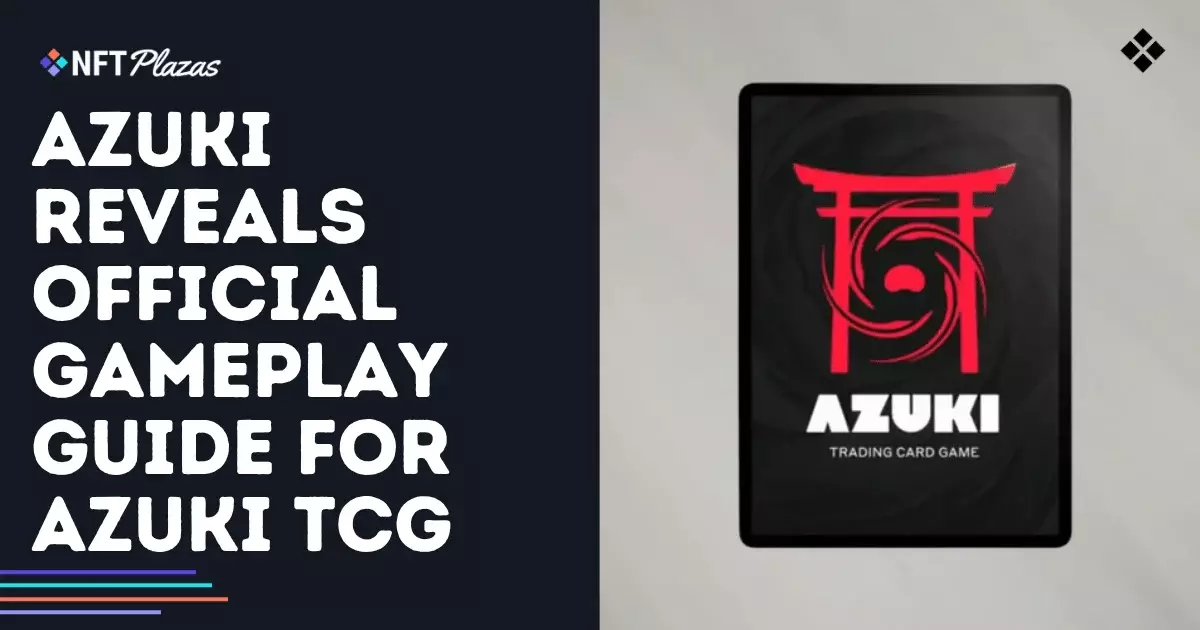In recent years, the allure of blockchain-based gaming, especially trading card games (TCGs), has dazzled both investors and players alike. Companies like Azuki have positioned themselves at the forefront of this wave, blending digital art, Web3 communities, and anime-inspired themes into a cohesive brand. The recent release of Azuki’s gameplay guide, ahead of its first in-person tournament, appears to mark an important step. However, beneath the glossy surface of this announcement lies a deeper skepticism rooted in the persistent flaws of NFT gaming—an industry that often overpromises but underdelivers. As a critic with a guarded view, I question whether Azuki’s TCG will become a sustainable success or just another fleeting digital fad.
The Reality Behind Blockchain-Enabled TCGs
Despite the excitement surrounding Azuki’s structured gameplay, the core issues plaguing blockchain gaming remain unaddressed. First, the supposedly revolutionary “no download” accessibility masks a deeper concern: the integration, or lack thereof, of real digital ownership. The guide notes that it doesn’t currently incorporate digital assets or tokens, which suggests a limited angle for blockchain technology’s true potential. Many projects rush toward introducing blockchain for the perceived value of “ownership,” yet often fail to deliver genuine utility or transparency. Consequently, the strategic depth the guide describes—faction decks, resource systems, and attack mechanics—would only truly matter if the blockchain component contributed to a real, verifiable, and tradable digital economy. The current approach seems to merely mimic traditional TCGs with superficial blockchain gloss.
The Business Model and Its Fragility
A critical weakness of NFT-based games like Azuki’s is their business model’s dependency on continuous hype and speculative trading rather than solid gameplay. The guide emphasizes gameplay mechanics, yet it conspicuously omits detailed information on digital asset integration, which raises questions about monetization strategies. Without a compelling reason to purchase, trade, or hold digital assets beyond superficial ownership, players are unlikely to invest heavily. This leaves the game vulnerable to the same issues that have plagued other NFT projects: speculative bubbles, pump-and-dump schemes, and fleeting communities. Unless Azuki manages to embed blockchain assets into meaningful gameplay—something the current information doesn’t suggest—it risks becoming a flash in the pan rather than a durable community fixture.
The Practicality of Gameplay Mechanics in a Competitive Space
The gameplay description surfaces intriguing mechanics—faction-based decks, resource management, and strategic positioning. Yet, these features echo traditional successful TCGs, rendering the blockchain element largely cosmetic at this stage. The two-row field, specialized cards, and victory conditions are familiar territory for veteran players, but they also highlight a significant challenge: differentiation. Can Azuki’s TCG stand out amid a crowded marketplace dominated by established giants like Magic: The Gathering or Hearthstone? Without innovative gameplay that leverages blockchain’s unique capabilities—such as verifiable scarcity, tamper-proof ownership, or player-driven economies—the title risks being overshadowed. The limited mention of digital assets suggests that blockchain integration remains superficial, serving more as a marketing veneer than a true value add.
The Cultural and Market Realities
Another layer of skepticism arises from the cultural landscape surrounding NFT gaming. The NFT community is often criticized for being speculative, short-sighted, and disconnected from traditional gaming values like skill, balance, and fairness. For Azuki’s TCG to succeed, it must transcend these issues and build a community grounded in genuine gameplay, not just digital collectibles. The upcoming tournament is a positive step, but tournaments alone aren’t enough to foster lasting player engagement. Without a clear roadmap to sustain interest, implement updates, and expand the game’s ecosystem, Azuki’s project might just capitalize on hype before quickly fading away.
All signs point to Azuki’s intricate marketing efforts and the tactical release of their gameplay guide as attempts to build hype—yet, beneath the surface, there are critical hurdles. The hype surrounding blockchain-enabled TCGs often exaggerates their real utility, and Azuki’s current blueprint suggests a game still heavily reliant on traditional mechanics rather than blockchain’s revolutionary potential. If history is any guide, these projects often stumble once initial excitement subsides, revealing a lack of depth or sustainable economic model. As a skeptical observer, I foresee the risk that Azuki’s TCG will struggle to prove its worth outside the bubble of NFT hype, risking becoming just another digital collectible fad with fleeting relevance.

